Do you want to know how to repair damaged hair since your locks seem and feel stressed out? As a result, practically everything we expose our hair to on a daily basis causes some harm, making the occurrence of dry, lifeless hair strands almost inevitable. Good news! There are numerous methods for revitalising locks. Hairstylists offer some of the best tips and warning indications of damage to dry hair, along with extra care recommendations.
Signs of Damaged Hair

Hair damage can be easily identified in a few ways. Here are several obvious symptoms of damaged hair, such as changes in texture or thinning hair.
Dry hair: If your hair feels brittle or feels dry all the time, it’s likely damaged. You probably have dry hair if your hair also loses moisture easily and dries out rapidly while wet.
Shedding: Although some hair shedding is normal, if it appears more frequently than it usually does—in the shower, on your pillow, or on your brush—it can indicate that your hair is damaged.
Tangles: Every hair type can occasionally become tangled, although long or curly hair is more likely to do so. On the other hand, damage may be indicated if you observe an increase in tangles or if you typically don’t have many problems with knots.
Split ends or breakage: One of the most prevalent indications of damage to hair is split or thinned ends. This is frequently observed when brushing or running your hands through your hair.
dull hair Does your once-lustrous hair appear a little more lifeless these days? An other indicator that your hair requires extra care is a lack of lustre or smoothness.
Common Causes of Damaged Hair
Numerous things can harm and negatively impact the health of your hair. Your hair experiences a lot, from daily exposure to the sun and other environmental factors to hair products and style equipment.
“The most frequent sources of damage to [hair] are heat damage from utilising hot tools on a daily basis and chemical treatments like chemical relaxers and colouring. Damage can also be caused by environmental elements like harsh water, UV radiation, and even extremely cold temperatures, according to hairstylist Susan Ford.
The health of your hair can also be impacted by other factors, such as stress. Dryness from frequent washings and a lack of moisture might cause breaking in your hair. Hair loss or thinning may result from an unbalanced diet deficient in certain vitamins and minerals (such as iron, C, and D). The health of your hair can also be impacted by a few medical illnesses, such as autoimmune disorders and thyroid problems.

13 Ways to Fix Damaged Hair
Take a look at some of these hair restoration tips now that you know what causes damaged hair and what symptoms to look for when hair needs assistance.
Use a Hair Mask

For dry, damaged hair, there are several of excellent drugstore shampoos and conditioners available. A third component of your regular haircare regimen should be included, in addition to the shampoo and conditioner you use on a daily basis.
Ford advises using a hair mask once a week and looks for hydrating recipes that contain ingredients like avocado, coconut, and shea butter. Pattern Mask Treatment is an excellent choice for people who have coily or curly hair and are interested in testing a rice water-based hair product.
These items will add a lot of moisture, but they won’t fix any damage (more on that in a moment). Consequently, hair appears and feels smoother and softer, which is always a positive thing.
Look for Bond-Building Treatments
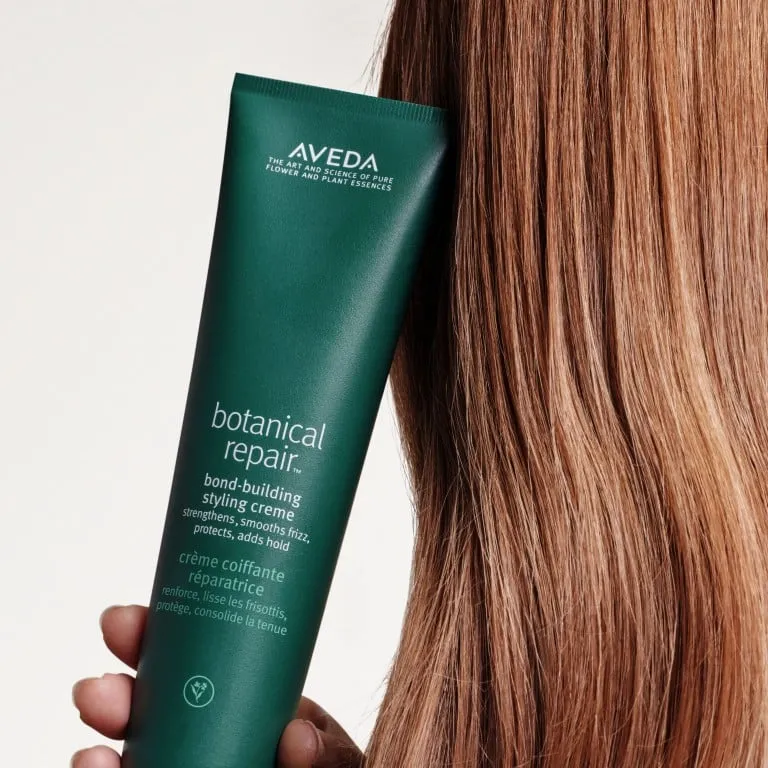
Hair damage is hard to reverse once it’s occurred, but a new line of products claims to help. The way that bond-building treatments function is that they really mend the broken protein links in hair. It’s difficult to pinpoint certain compounds to look for because they rely on a variety of unique ingredients, says Ford.
Olaplex No. 4, a shampoo that helps prevent split ends, is a wonderful place to start for damaged hair. Look for products that mention bond repair specifically, such as Olaplex No. 3 Hair Repair Perfector (sephora.com). This product, one of the originals in the field, operates in just 10 minutes and can be used once a week or up to three times.
The conditioner that we love the most, Olaplex No. 5 Bond Maintenance, works well for every kind of hair. We also love amika The Kure Multi-Task restore Treatment (sephora.com), which employs bond-cure technology to treat hair and has been clinically tested to restore 74% of hair after just three applications.
Shield Strands From Heat

The main cause of damage can be frequent blow-drying (or using a curling iron or straightener), but the solution is quite simple. According to Ford, the best method to shield damp hair from the harm that high temperatures in direct heat can inflict is to lightly spritz it with a heat protectant before using any instruments.
TRESemmé Heat Tamer Spray (cvs.com) is worth trying. Thermique Régénérant Blow Dry Primer is an additional excellent leave-in conditioner that offers protection from heat. Alternatively, you might spend more money on a curling iron that is gentler on hair, such as the Dyson Airwrap.
Schedule Regular Haircuts
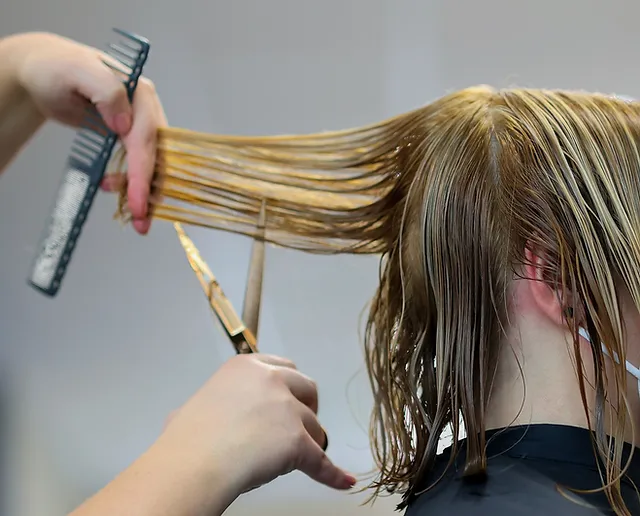
Although many people overlook it, this is another easy remedy. Schedule a haircut in advance for every six weeks as a habit. By doing this, Ford adds, you’ll be able to avoid breakage and split ends and keep your ends healthy.
Though seemingly harmless, split ends can give the appearance of frizz and damage to your hair. More severe harm may also be inflicted if they proceed higher up the hair shaft. If necessary, make sure to schedule a time slot in advance or set a reminder on your phone while you’re at the salon, but make getting frequent haircuts a strict routine.
Protect Hair From the Sun

Unexpected revelation: Sunscreen isn’t just for skin. In addition to drying out hair, UV radiation can fade hair colour. According to Ford, the best protection is to always wear a hat when you’re outside in the sun. You may also try using a leave-in sunscreen.
Aveda Sun Care Protective Hair Veil (aveda.com) is recommended by Ford; spritz it on dry hair. In addition to protecting hair from the sun, it will serve as a shield to stop pool or saltwater stains and other drying agents from penetrating your hair.
Brush Carefully
An very subtle source of mechanical harm is overzealous, inappropriate hair brushing, which we may be doing on a daily basis without even realising it. Maintain a few key brushing guidelines to reduce damage.
- Brush your hair from the bottom up. If you begin at the roots and work your way down, you risk pulling knots towards the ends and creating a single, massive snarl at the very section of your hair that is most brittle and prone to breaking. This risk is eliminated by working your way up from the ends.
- Before taking a shower, brush your hair because washing it could result in extra tangles. You can reduce the quantity of knots and tangles in your hair by brushing it before washing it.
- Apply a leave-in conditioner or hair detangler: After washing, use a leave-in conditioner or hair detangler spray before brushing to give the hair some slide and reduce the amount of pulling and yanking required to get rid of knots. The multipurpose Odele Leave-In Detangling Tonic (target.com) is a clean, reasonably priced solution that moisturises, detangles, and shields hair from heat and pollution. We can’t get enough of it.
Apply a Leave-in Conditioner

Leave-in conditioners are designed to hydrate hair by soaking into hair strands; unlike conventional conditioners, they are not rinsed away. In addition to moisturising parched hair, a high-quality leave-in conditioner makes it easier to untangle and style damaged hair.
Leave-in conditioners work wonders for people with dry, frizzy, or curly hair, but anyone can use them. One benefit of leave-in conditioners is that they shield hair from environmental elements like the sun and pollution, which helps to prevent further damage to the hair.
Invest in a Professional Treatment
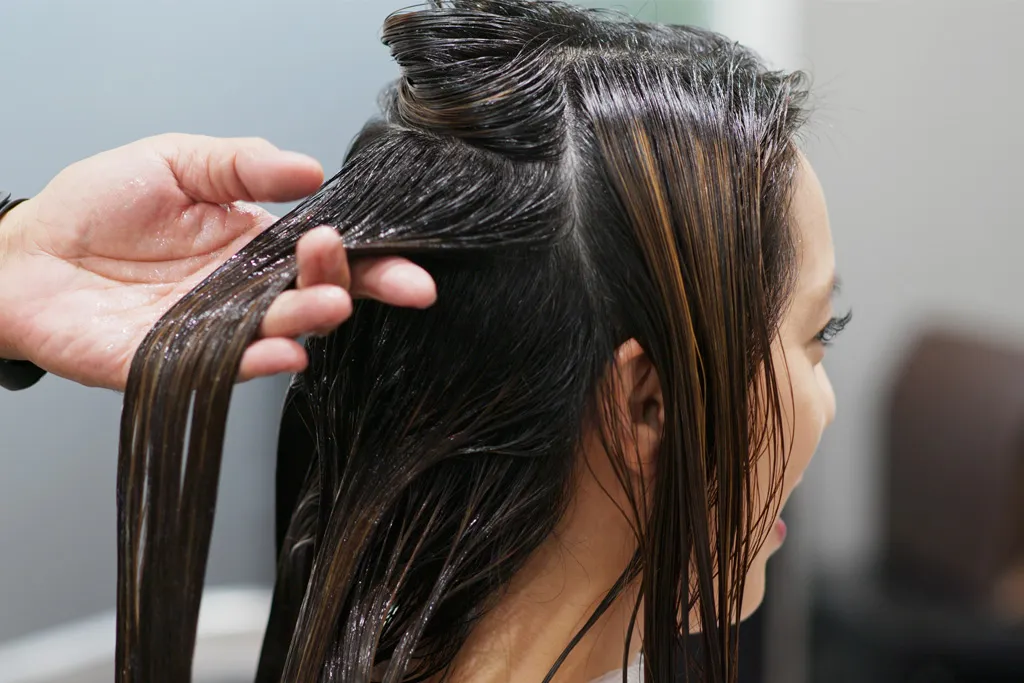
Anyone with extremely dry or damaged hair may find that receiving expert salon treatment is the best method to help restore the damage. Consult your favourite stylist or a nearby salon to find out what choices they think will work best for your type of hair. Popular treatments that a lot of people try include keratin, deep conditioning, bond fusion, and even hot oil treatments.
Wash Hair Less Often
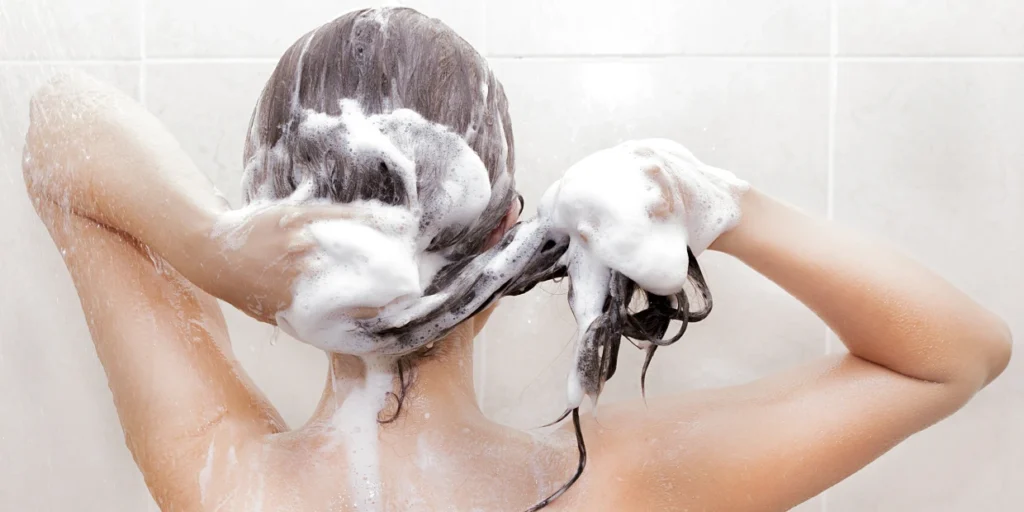
Your hair’s health and possible damage might be impacted by how frequently you wash it. Washing your hair once a week or even less regularly may be necessary, depending on your hair texture and other factors (such scalp health and styling).
Few people should typically wash their hair every day. Natural oils are removed from your hair more frequently the more you wash it. Furthermore, overworking your hair raises the possibility of hair damage.
Avoid Rubbing Hair With a Towel

It’s recommended not to rub your hair after washing it because this can make your hair frizzier and more prone to breaking. To avoid hair plopping, as it’s known in the community of people with curly hair, cover your hair in a microfibre towel (a T-shirt will also do) to absorb the water. When the hair is partially dried, you can also let it air dry or use a blow dryer (with heat protectant).
Use a Wide-Tooth Comb
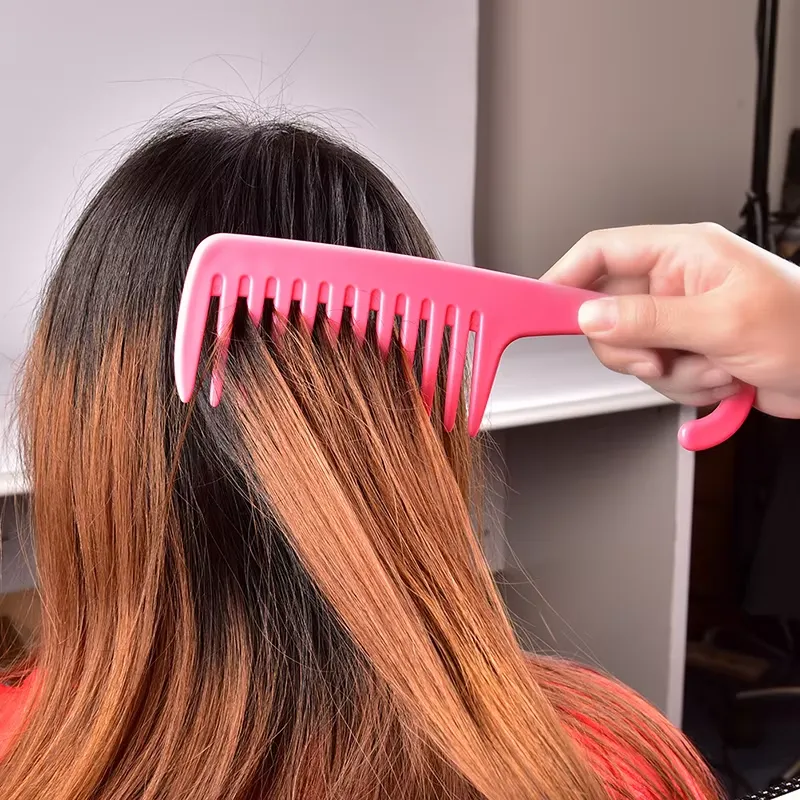
Split ends and breaking of hair can be prevented by using a wide-tooth comb rather than a fine-toothed one or a tiny brush. A wide-tooth comb can be used on semi-dry or damp hair, particularly on curly hair. It works well for people whose hair tangles easily and is an excellent technique to style hair that is already damaged without aggravating it further.
Try Heatless Styling
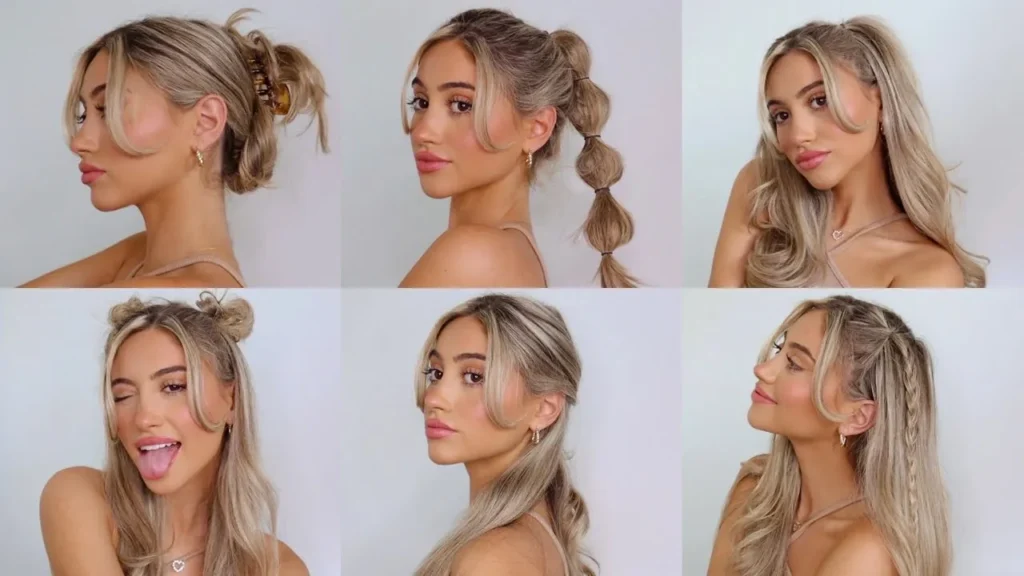
It’s advisable to refrain from using heat styling equipment on dry, damaged hair and give it time to heal. There are various heatless hairstyles you can try that won’t harm your hair further than a simple wash and go. Additionally, it provides your hair strands with an opportunity to heal through conditioning treatments and other methods.
Purchase a Silk Pillowcase
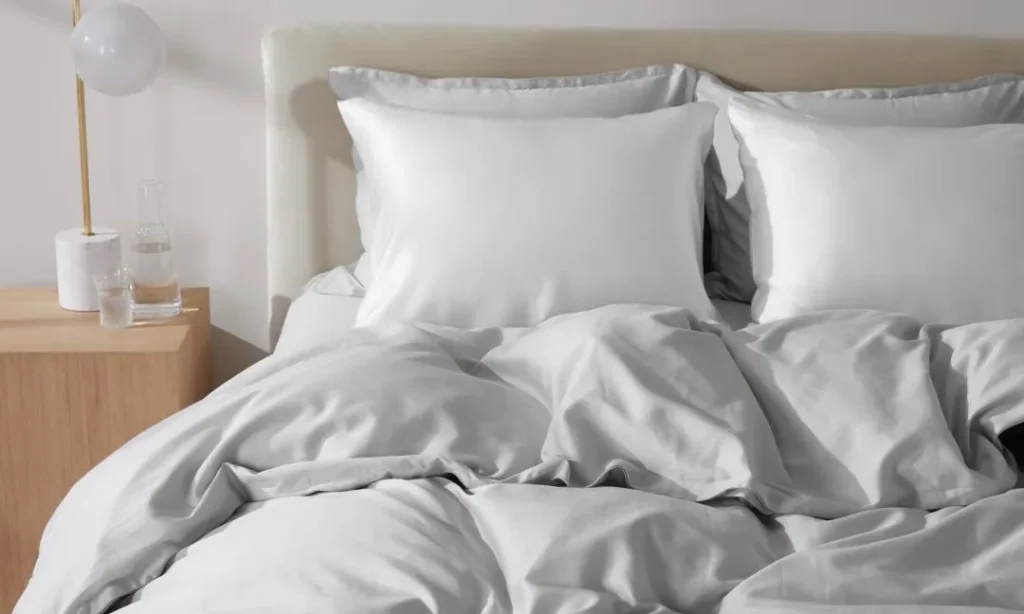
Although silk pillowcases feel luxurious, there are benefits for your skin and hair when you sleep on them. The likelihood of frizz and knots is decreased when you rest your head on a silky-smooth pillowcase since there is less friction. Silk pillowcases additionally encourage lustrous, healthy hair by promoting the healing of damaged hair and averting further damage.

